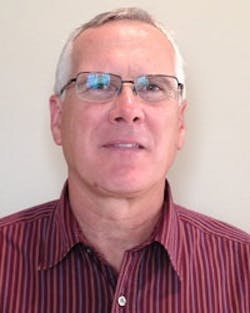Where is the maintenance and reliability profession headed?
Bill Schlegel retired from Novelis (www.novelis.com) as director of manufacturing excellence in 2012. Novelis and Tri-Arrows Aluminum jointly own Logan Aluminum (www.loganrawmaterials.com), where Schlegel was manager of engineering and maintenance in the mid-1990s, the same time he was chairman of the Society for Maintenance & Reliability Professionals (www.smrp.org). He currently is doing independent consulting work in the area of manufacturing excellence.
PS: What are the big changes you've seen in maintenance and reliability from when you were SMRP chair to now?
BS: Maybe, first, it might be good to say what has not changed all that much over the years. It seems M&R basics are still the basics. Today, the same key principles remain: to make sure that the culture of reliability is firmly set in place and that fundamentals of reliability are taught by knowledgeable leaders who have a passion for the subject. As to what has changed the most, you would have to say the supporting technology. The advances in PdM tools, for example, have come a long way, and the cost to own the equipment has come down dramatically. Also, the standards that allow data to be reported, stored, and analyzed have made our work much easier. You can now look at PdM data from multiple sources and use them to create a complete picture of the process state, down to component level. It is also possible to use process data as inputs to reliability, as never before. Another area where change is occurring is in the front office. The executive management team is seeing the need for business reliability, or predictability of the operation from order entry all the way through to accounts payable. As industry has adopted lean methods, we are seeing an ever-increasing need for reliability. Without a stable manufacturing process, consistent product quality and the reduction of inventories and lead-time are not possible. Lastly, there is much more emphasis on breaking down departmental silos which only serve to limit communication and creativity. I am seeing many more articles and presentations at R&M events that point out the importance of working across the white space of the organizational chart. Personally, I think most organizational structures break down, not because of the lines on the chart, but due to the lack of clear expectations set by leadership to work across the departmental walls. If you think about it, the manufacturing process has no feelings toward how the people are organized; it just demands that basic requirements are met each day. You cannot divide safety, reliability, quality, energy management, environmental, or manufacturing from each other. They are part of an overall, interconnected system, and the organization needs to organize and perform to that end.
PS: What is the one accomplishment under your leadership that you're most proud of?
PS: Who in the SMRP organization had the biggest influence on you and your career?
BS: There were many, but I would have to single out Al Weber, who was chairman for the first two years. He was the glue that kept us organized and moving forward. He has always been a gentleman, and he set a tone for the leadership of SMRP to follow thereafter.
PS: Where is the maintenance and reliability profession headed, and where would you like to see it go?
BS: As I mentioned earlier, I see M&R now having a seat at the table, as in no time in the past. We are trying to do more with less during difficult economic times, so capital is tight. The only way to create more output at low cost is to use our manufacturing assets wisely. This means we have the opportunity to bring reliability and maintenance up to a level we have not seen in years. Our job as professionals is to make sure we are ready to teach up the organizational chart, while developing the next generation of skilled workers. I think our biggest challenge, going forward, is filling the technical skills gap, while sustaining the gains we make in manufacturing excellence. We have to figure out a way to do the basics well, while continually improving manufacturing methods and technology.

